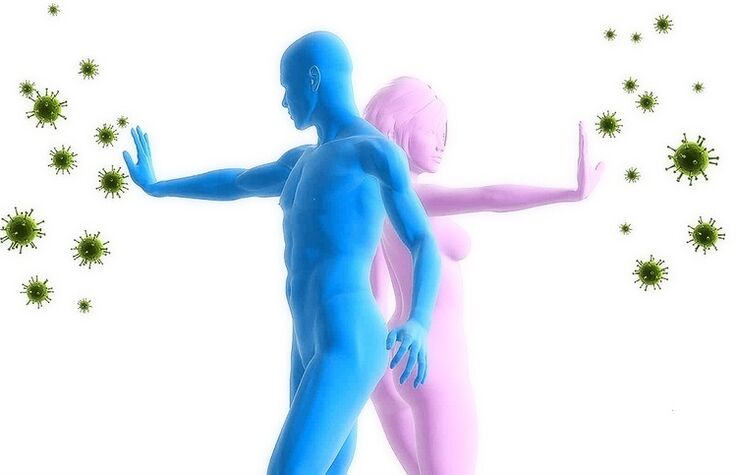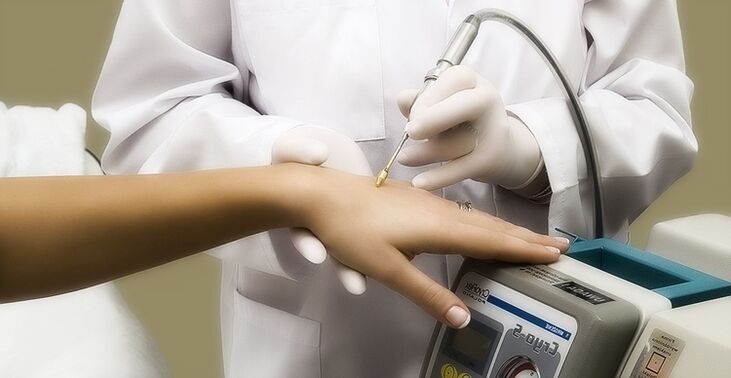Human papillomavirus is an oncogenic disease. The main manifestations of HPV are the development of warts, papillomas and warts on the skin and mucous membranes. Both women and men are affected by the virus.
Causes of HPV onset and activation
Note! The main cause of papillomavirus in the body is the infection of an infected person.
The causes of infection are:
- weakened immunity;
- bad habits;
- frequent and severe nervous shocks;
- viral infections;
- pathology of the gastrointestinal tract;
- frequent exchange of sexual partners, unprotected sexual intercourse.
Can human papillomavirus be cured?
HPV can be treated during the active phase of development.
The main goal of treatment is to eliminate the symptoms and strengthen the defense mechanism of the human body.
Different treatments can be used depending on the type of virus, symptoms and complications.
Can HPV be cured permanently?
The peculiarity of HPV is that once it enters the body, it settles in it forever. During periods when the body has a strong defense mechanism and is not exposed to the above risk factors, the virus is at rest and not activated.
With a decrease in the immune system, non-compliance with hygiene rules, and deterioration of health, the papillomavirus may reactivate.

Methods of papillomavirus infection
Infection with the HPV virus occurs through direct contact with the infected person through the mucous membranes and skin. There are several ways to get infected:
- The main method is sexual intercourse. The probability of transmitting papillomavirus from an infected partner during unprotected intercourse is 60-70%. The risk increases significantly with frequent partner changes. In the presence of microtraumas on the mucosa, infection is possible even during kissing or oral sex;
- HPV infection also occurs at home: when the same towels, utensils, and hygiene products are used with an infected person. There is a risk of papillomavirus infection in public saunas, baths and swimming pools;
- Vertical transmission of the virus is also possible - from mother to fetus during childbirth.
Why is human papillomavirus dangerous?
All types of HPV fall conditionally into two categories: low-risk and high-oncogenic viruses. Groups in the second category are able to develop into an oncological disease.
Note! HPV poses the greatest risk to women: highly oncogenic strains of the virus are most prone to them.
In women, papillomavirus can cause a number of diseases related to the reproductive system:
- cervical pathology: erosion, leukoplakia, adenocarcinoma, cancerous tumors;
- oncology of the external genitalia, anal area.
In addition, the development of the disease is accompanied by the appearance of warts and papillomas on the genitals, limbs, armpits and neck. Tumors cause discomfort, disrupt hygiene and normal living, and must be disposed of.
Men have a lower risk of developing HPV-associated cancer, but this is not out of the question. In addition, acute-angled papillomas can form on the penis, causing discomfort and disrupting normal sexual activity. Such neoplasms should be removed immediately.
Diagnostic methods
Identification of the disease usually begins with a visual examination by a physician. During the examination, the mucous membranes and skin tissues are studied, especially the areas where warts and papillomas most often develop: the genitals, the armpits, the neck.
The main methods for diagnosing HPV are:
- Women must have colposcopy, cervical and vaginal examinations, and cytological (scraping) tests. If oncology is suspected, a biopsy may be prescribed;
- PCR analysis (polymerase chain reaction). It allows the DNA of the virus to be identified from any material provided for analysis;
- The Digene test is a more accurate analysis. The results show that the papillomavirus can be detected, identified by DNA, and the extent of the malignancy can be determined.
General treatment regimen for HPV
There are currently no uniform international protocols for the treatment of human papillomavirus. Two-component treatment regimens have worked best: they combine the removal of viral lesions with surgical techniques and the concomitant delivery of specialized antiviral therapy. The effectiveness of this approach in the treatment of HPV is up to 90%.
Characteristics of treatment of children
When HPV is activated in a child, doctors use conservative therapies first and foremost: prescribing immunomodulators and vitamins, and topically treating the rash with ointments and compresses.
Surgery is usually used only when an increase in warts and papillomas is observed during observation.
Characteristics of treatment during pregnancy
Note! HPV has no significant negative effect on the development and course of pregnancy during childbirth.
The main recommendations for the treatment of papillomavirus during pregnancy are:
- If the virus is detected before pregnancy, it should be treated immediately. This normalizes immunity and avoids thrush and other infections;
- It is desirable to plan the onset of pregnancy at the end of the second cycle after completion of treatment;
- Treatment for HPV during pregnancy should start at the earliest in the 28th week of pregnancy - the time when all the organs in the baby are developing. This will help you avoid the negative effects of the medication on your child's body.
papillomavirus treatment
The main treatments for HPV are:
- taking specific antiviral drugs;
- course of immunomodulators;
- surgical removal of tumors (papillomas, warts);
- reducing the symptoms of the disease using traditional medicine.

Antiviral therapy
Important! The choice of drugs depends on the type of virus and the characteristics of the body. Only a doctor can prescribe a course of therapy and medication, self-medication can make the situation worse.
Immunomodulatory drugs
The appointment of immunomodulators should be done by a doctor according to the patient's immunogram - this will result in a faster and more stable result.
Surgical approach (removal of growth)
The main goal of HPV surgery is to remove virus-modified cells from the body.
Removal can be done in several ways, depending on the characteristics of the disease and the doctor's indications:
- Electrocoagulation. Depending on the HPV group, the effectiveness of treatment ranges from 80% to 95%;
- Laser rash removal. High efficiency but high probability of relapse. In addition, the wounds heal for a long time after the procedure - up to 4 weeks;
- radio wave surgery. Used to remove individual formations;
- Cryotherapy. Efficacy - up to 65%, relapse occurs in 40-50% of cases;
- Chemo-destructive agents. It can only be used for rashes in the genital area. Relatively low efficiency - no more than 40%.
Folk remedies
Note! Alternative medicine devices should not be considered a complete method of treating HPV. However, these are affordable and harmless ways to attenuate the active manifestation of the virus.
The most effective against papillomavirus are the following folk remedies: fresh potato juice, a mixture of steeply boiled fiber, garlic and vinegar, Kalanchoe leaves, tea tree oil.
These should be used in the form of compresses and dressings for the external manifestations of HPV - papillomas, warts.
Prevention of HPV recurrence
The main purpose of preventing the recurrence of warts and papillomas is to strengthen immunity and maintain hygiene at home and in public places. Recommended:
- follow a proper diet;
- vitamin therapy should be given;
- adhere to a normal way of working, get enough sleep and fully relax;
- increases physical activity.
Important! Vaccination is an effective way to prevent HPV reactivation - it can provide protection against the most dangerous groups of the virus for a long time.























